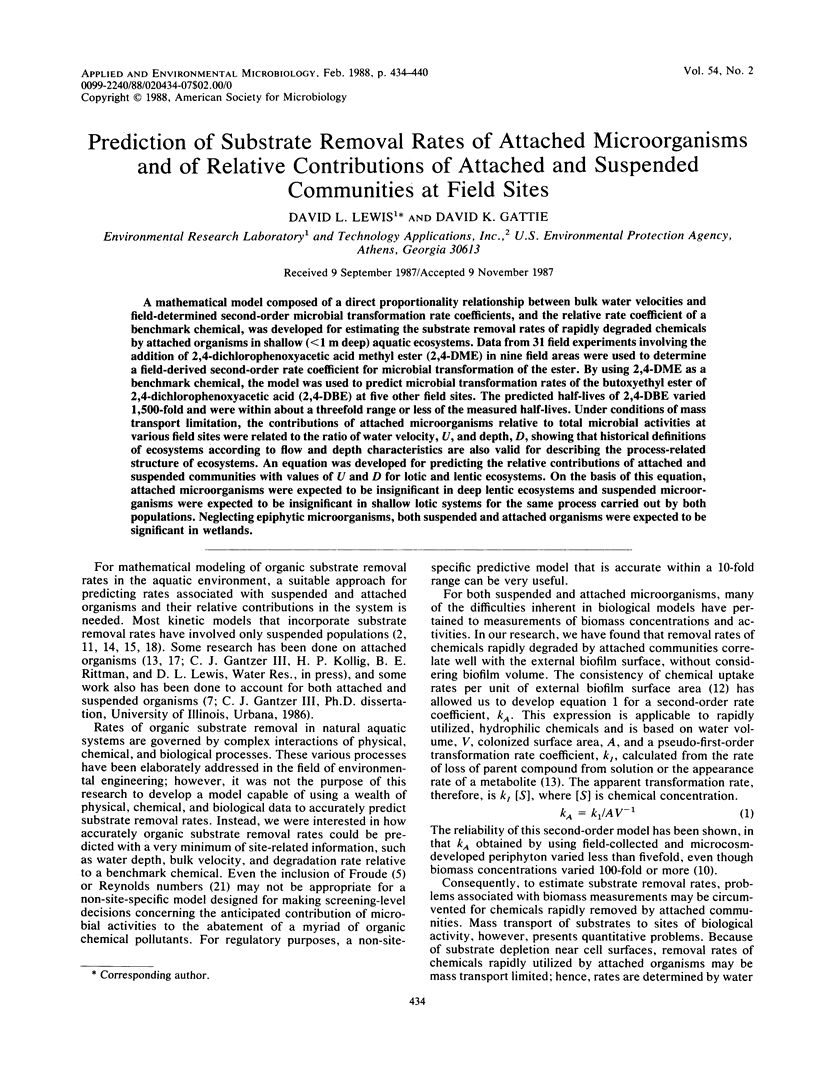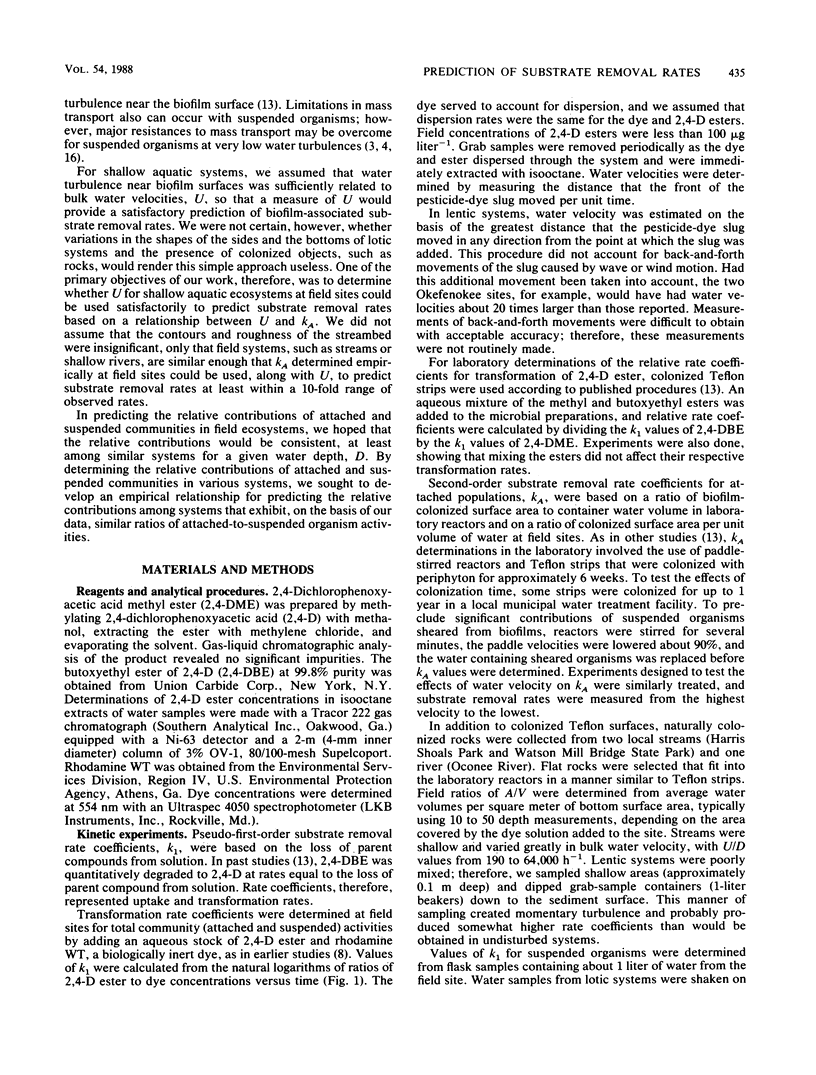Abstract
A mathematical model composed of a direct proportionality relationship between bulk water velocities and field-determined second-order microbial transformation rate coefficients, and the relative rate coefficient of a benchmark chemical, was developed for estimating the substrate removal rates of rapidly degraded chemicals by attached organisms in shallow (<1 m deep) aquatic ecosystems. Data from 31 field experiments involving the addition of 2,4-dichlorophenoxyacetic acid methyl ester (2,4-DME) in nine field areas were used to determine a field-derived second-order rate coefficient for microbial transformation of the ester. By using 2,4-DME as a benchmark chemical, the model was used to predict microbial transformation rates of the butoxyethyl ester of 2,4-dichlorophenoxyacetic acid (2,4-DBE) at five other field sites. The predicted half-lives of 2,4-DBE varied 1,500-fold and were within about a threefold range or less of the measured half-lives. Under conditions of mass transport limitation, the contributions of attached microorganisms relative to total microbial activities at various field sites were related to the ratio of water velocity, U, and depth, D, showing that historical definitions of ecosystems according to flow and depth characteristics are also valid for describing the process-related structure of ecosystems. An equation was developed for predicting the relative contributions of attached and suspended communities with values of U and D for lotic and lentic ecosystems. On the basis of this equation, attached microorganisms were expected to be insignificant in deep lentic ecosystems and suspended microorganisms were expected to be insignificant in shallow lotic systems for the same process carried out by both populations. Neglecting epiphytic microorganisms, both suspended and attached organisms were expected to be significant in wetlands.
Full text
PDF






Selected References
These references are in PubMed. This may not be the complete list of references from this article.
- Borkowski J. D., Johnson M. J. Experimental evaluation of liquid film resistance in oxygen transport to microbial cells. Appl Microbiol. 1967 Nov;15(6):1483–1488. doi: 10.1128/am.15.6.1483-1488.1967. [DOI] [PMC free article] [PubMed] [Google Scholar]
- Button D. K. Kinetics of nutrient-limited transport and microbial growth. Microbiol Rev. 1985 Sep;49(3):270–297. doi: 10.1128/mr.49.3.270-297.1985. [DOI] [PMC free article] [PubMed] [Google Scholar]
- Lewis D. L., Hodson R. E., Freeman L. F., 3rd Effects of microbial community interactions on transformation rates of xenobiotic chemicals. Appl Environ Microbiol. 1984 Sep;48(3):561–565. doi: 10.1128/aem.48.3.561-565.1984. [DOI] [PMC free article] [PubMed] [Google Scholar]
- Lewis D. L., Holm H. W. Rates of transformation of methyl parathion and diethyl phthalate by aufwuchs microorganisms. Appl Environ Microbiol. 1981 Oct;42(4):698–703. doi: 10.1128/aem.42.4.698-703.1981. [DOI] [PMC free article] [PubMed] [Google Scholar]
- Lewis D. L., Kollig H. P., Hall T. L. Predicting 2,4-dichlorophenoxyacetic Acid ester transformation rates in periphyton-dominated ecosystems. Appl Environ Microbiol. 1983 Jul;46(1):146–151. doi: 10.1128/aem.46.1.146-151.1983. [DOI] [PMC free article] [PubMed] [Google Scholar]
- Paris D. F., Steen W. C., Baughman G. L., Barnett J. T. Second-order model to predict microbial degradation of organic compounds in natural waters. Appl Environ Microbiol. 1981 Mar;41(3):603–609. doi: 10.1128/aem.41.3.603-609.1981. [DOI] [PMC free article] [PubMed] [Google Scholar]
- Paris D. F., Wolfe N. L., Steen W. C. Microbial transformation of esters of chlorinated carboxylic acids. Appl Environ Microbiol. 1984 Jan;47(1):7–11. doi: 10.1128/aem.47.1.7-11.1984. [DOI] [PMC free article] [PubMed] [Google Scholar]
- Schmidt S. K., Simkins S., Alexander M. Models for the kinetics of biodegradation of organic compounds not supporting growth. Appl Environ Microbiol. 1985 Aug;50(2):323–331. doi: 10.1128/aem.50.2.323-331.1985. [DOI] [PMC free article] [PubMed] [Google Scholar]


